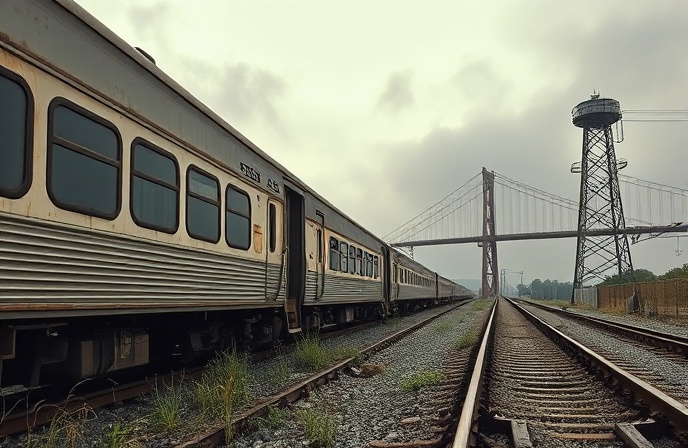Alstom Revives 30 GTR Trains: Tech, Savings, Sustainability

This article explores the recent expansion of Alstom’s technical support contract with Govia Thameslink Railway (GTR) in the UK, focusing on the reactivation of 30 Class 379 Electrostar trains. The expansion highlights several key aspects of modern railway operations: the strategic importance of maintaining and repurposing existing rolling stock to enhance capacity and operational efficiency, the increasing role of sophisticated data analytics in predictive maintenance and improving passenger service, and the ongoing commitment to sustainable rail solutions. We will delve into the details of this contract variation, examining its financial implications, the technological advancements it incorporates, and its broader significance within the context of the UK rail industry and beyond. This case study provides valuable insights into the complexities of managing a large, diverse fleet and the innovative solutions being deployed to optimize performance, reliability, and passenger experience. The economic considerations of extending the lifespan of existing rolling stock compared to procuring new units will also be analyzed, demonstrating the cost-effectiveness and sustainability benefits of such approaches.
Reactivation of Class 379 Electrostar Trains
Alstom’s expanded contract with GTR involves the reactivation of 30 four-car Class 379 Electrostar Electric Multiple Units (EMUs). These trains, originally built between 2010 and 2011, were acquired by Porterbrook from Akiem in March 2024. Their reactivation for service on the Great Northern network, connecting London King’s Cross with Cambridge, Peterborough, and King’s Lynn, represents a strategic decision to leverage existing assets rather than investing in new rolling stock. This approach offers significant cost savings and contributes to environmental sustainability by reducing the carbon footprint associated with manufacturing new trains. The trains will operate from the Hornsey depot, requiring refurbishment and maintenance works at Alstom’s Crewe Works, focusing on bogie overhauls and HVAC (Heating, Ventilation, and Air Conditioning) unit maintenance.
Technological Advancements in Train Maintenance
The contract expansion incorporates significant technological advancements in train maintenance and monitoring. Alstom’s HealthHub platform will be implemented for the first time on the GTR fleet, providing real-time monitoring of over 200 parameters every 30 seconds. This predictive maintenance approach allows for early detection of potential issues, minimizing downtime and improving the overall reliability of the trains. This proactive strategy aims to enhance passenger service by reducing delays and disruptions, ultimately contributing to a more efficient and reliable railway network. The implementation of HealthHub underscores the growing importance of data analytics and the Internet of Things (IoT) in modern railway management.
Economic and Sustainability Considerations
The £24.5 million (approximately €30.3 million) contract variation represents a cost-effective solution compared to the procurement of new trains. Reactivating existing rolling stock not only saves on capital expenditure but also reduces the environmental impact associated with manufacturing and transporting new units. This commitment to sustainable rail solutions aligns with broader industry efforts to minimize the carbon footprint of railway operations. The refurbishment works at Alstom’s Crewe Works further contribute to the local economy by creating and sustaining jobs within the rail industry.
Expansion of Alstom’s Technical Support and Spares Supply Agreement (TSSSA)
This contract variation builds upon the existing TSSSA signed in October 2022 for approximately £256 million (€317.1 million). The original agreement covered technical support and spare parts supply for the Class 377 and Class 387 fleets. The inclusion of the Class 379 fleet demonstrates Alstom’s commitment to providing comprehensive support for a wide range of rolling stock within the GTR network. This long-term partnership highlights the importance of strong collaboration between train manufacturers and railway operators in ensuring the efficient and reliable operation of the railway system. The comprehensive nature of the agreement allows for greater predictability and cost control for GTR, reducing operational risks associated with unexpected maintenance requirements.
Conclusions
The expansion of Alstom’s contract with Govia Thameslink Railway signifies a significant development in the UK rail industry, showcasing a strategic approach to fleet management and technological advancement. The reactivation of 30 Class 379 Electrostar trains demonstrates a commitment to both economic efficiency and environmental sustainability. By repurposing existing rolling stock, GTR and Alstom have avoided the substantial cost and environmental impact of procuring new trains, while simultaneously enhancing capacity on the Great Northern network. The integration of Alstom’s HealthHub platform underscores the transformative power of data analytics in predictive maintenance and the optimization of train reliability. This technology enables real-time monitoring and early detection of potential issues, leading to improved passenger service and reduced operational disruptions. Furthermore, the expansion of the TSSSA strengthens the long-term partnership between Alstom and GTR, ensuring continued support for a substantial portion of GTR’s fleet. The project also highlights the importance of collaboration within the rail industry, bringing together different expertise and resources to achieve shared goals of efficiency, sustainability, and enhanced passenger experience. In conclusion, this case study underscores the increasingly crucial role of technology, strategic planning, and collaborative partnerships in modern railway operations, paving the way for a more efficient, sustainable, and passenger-centric future for the rail industry.




